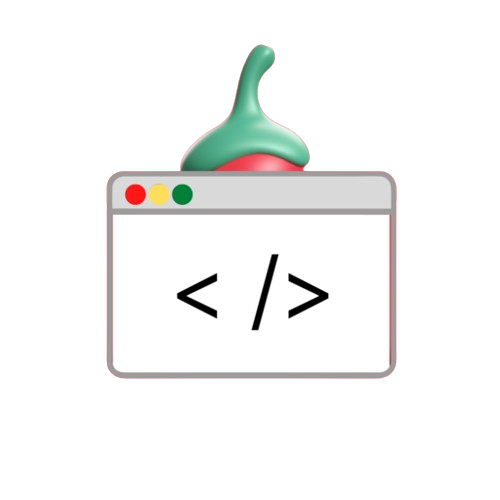Imagine a world where information isn’t a burden, but a treasure trove waiting to be unlocked. A world where seemingly random data whispers secrets about consumer trends, predicts future outcomes, and gives rise to groundbreaking innovations. This, my friend, is the thrilling domain of a data scientist – the modern-day alchemist. Let’s discover what is the future of data science.
The image of the number-crunching hermit is outdated. Today’s data scientist is a rock star of the tech world, wielding powerful tools and cutting-edge techniques to tackle some of humanity’s most pressing challenges. From optimizing traffic flow in megacities to personalizing your favorite streaming service recommendations. Data science is the invisible hand shaping our reality.
And the best part? The demand for these data scientists is exploding. The average salary across the globe? A cool $108,020 per year, according to recent studies. But money isn’t the only motivator to enter into this job. Data science offers a career path brimming with intellectual stimulation, constant evolution, and the immense satisfaction of turning insights into action.
Thus, if you have an inquisitive mind, a love of solving puzzles, and a hint of technological wizardry. A career in data science could be right for you. We’ll go into the always changing field of data science in this blog article. We will Go over the fundamentals you’ll need to know, and give you insider advice on how to keep ahead of the curve in 2024. Prepare to unleash your inner data hero—there are a ton of exciting things to come!
Table Of Contents
The Evolving Landscape

Data science is still in its infancy and has a huge potential growth ahead of it. It now differs in several ways from main professions due to recent findings and developments. Understanding the new data science technologies that are reshaping the future for the better is essential to grasping the jobs and skills this subject offers.
Generative AI :
Generative AI is powered by data science. Large-scale text, code, or picture datasets are used to train these potent models. Data scientists ensure that the AI learns from high-quality information by cleaning, analyzing, and preparing this data. The AI produces more accurate and lifelike images the better the data. In order to direct future development and guarantee that generative AI models provide the intended creative outputs, data science also aids in evaluating the efficacy of these models. To put it succinctly, data science is the unseen force influencing the possibilities of generative AI. You can explore 10 of the best AI’s in our this blog.
AR/VR systems :
Data science helps build 3D models of real-world objects and spaces with high accuracy, creating a believable virtual environment. By analyzing user behavior and preferences, data science personalizes AR/VR experiences, tailoring content and interactions for each user.
Quantum computing :

Quantum computing holds immense potential, but its raw power needs a guiding hand. Data science bridges this gap. By analyzing vast amounts of quantum data (experiment results, simulations), data scientists can:
They can identify optimal configurations for quantum hardware and algorithms, leading to more efficient computations. Data science helps identify and correct errors that plague quantum systems, improving their reliability.
Real-World Applications: Data scientists translate complex quantum results into practical applications across various fields, like materials science and drug discovery.
You can read more about quantum computing in our this blog.
Statistics :
Statistics provides the foundation for data science. It equips us with tools to analyze data, but data science goes beyond. It leverages programming, machine learning, and computing power to extract knowledge from massive datasets. This allows data science to uncover hidden patterns, make predictions, and automate tasks, significantly boosting the power and reach of statistical analysis.
Core Skills for data science
Programming languages :
Python, R, and SQL are the power trio for data science, each serving a distinct but crucial role:
Python: A versatile and beginner-friendly language, Python excels at data analysis, manipulation, and visualization. Its extensive libraries like Pandas, NumPy, and Matplotlib make it a one-stop shop for wrangling and exploring data. Additionally, Python’s strength in machine learning with libraries like scikit-learn makes it a favorite for building and deploying models.
R: Renowned for its statistical capabilities, R offers powerful tools for data exploration, statistical modeling, and creating high-quality visualizations. Its rich ecosystem of packages caters to advanced statistical analysis and is a go-to choice for researchers and academics in data science.
SQL: The language of databases, SQL is essential for extracting and manipulating data stored in relational databases. Data science projects often rely heavily on data from various sources, and SQL provides the bridge to efficiently retrieve and integrate this data for analysis in Python or R.
Mastering these languages equips data scientists with the tools to handle the entire data science workflow, from data acquisition and cleaning to analysis, visualization, and model building.
Statistics and Mathematics:
As you might be knowing, Mathematics is the subject of future. Because of a variety of topics and units. Mathematics comes handy in the field of data science because of its core subject, i.e. Statistics. Data science has everything to deal with data, charts, excel etc. hence having a basic understanding of Linear algebra, calculus, probability, and hypothesis testing is essential for the manipulation and data interpretation.
Machine learning fundamentals
Machine learning (ML) fundamentals are the bedrock of data science. Just like a builder needs a grasp of blueprints, data scientists leverage core ML concepts to unlock the power of data. Here’s why they’re crucial:
Understanding Supervised Learning: This empowers you to train models that predict future outcomes based on labeled data (think spam filters learning from labeled emails). It’s widely used for tasks like image recognition and customer churn prediction.
Grasping Unsupervised Learning: This equips you to find hidden patterns and structures in unlabeled data (think grouping similar customer profiles). It’s used for tasks like anomaly detection and market segmentation.
Emerging skills to keep an Eye on

Cloud Computing : Cloud computing has become a game-changer for data science. Platforms like AWS, Azure, and GCP offer on-demand access to vast computing power, storage, and tools. This eliminates the need for expensive on-premise infrastructure, allowing data scientists to handle massive datasets, train complex models, and scale their projects efficiently. As data continues to grow exponentially, familiarity with these cloud platforms is crucial. Keeping an eye on advancements in cloud computing ensures data scientists can leverage the latest resources and stay competitive in this ever-evolving field.
Big Data: Big Data are extremely large-scale data sets. Typically, we work with data that is MB (Word Doc, Excel) or up to GB (Movies, codes); nevertheless, big data is defined as data that is in Peta bytes, or 10^15 byte sizes. It is estimated that in the last three years, about 90% of the data in use today was created.
Expert Tips from the field to land into data science:
Continuous learning :
As the technology curve advances and becomes more steep, you should not make your learning curve parallel to the time. Remember, new technologies come every week and there are more and more people enrolling and making the most out of it daily. What you have to do is to not stop and stay update with the trend data science has to follow. Maybe in future we see a new skill or technology which would potentially replace any of the skills data science has to offer. SO what a smart person would do is to update their methods and become more advanced with the advance technology.
Building a Strong Portfolio:
In the long run, no one will actually see what skills you have learned unless it is written or stored somewhere in the form of a portfolio or resume to give the proof of how far your hard work and continuous learning took you to.
Networking and Communication:
Attending conferences, workshops, and online communities to connect with other data scientists and hone communication skills will skyrocket your chances of being a good data scientist in the long run.
Sharpening Problem-Solving Skills:
You will have to sharpen your mind by solving real world problems and creating a solution to it on daily basis, consider making daily programs of data manipulation and interpretation on excel with python. You can use technologies like ChatGPT to create problems for you to solve.
Remember, learning and practicing is what will help you grow better in any field.
So, that’s it! By following these tips and staying curious, you’ll be well on your way to conquering the ever-evolving world of data science. Remember, the most valuable skill in this field might just be your ability to learn and adapt. Now get out there, explore, experiment, and keep that data flowing!





Pingback: Coding for Beginners: Your Guide to Starting in 2024 - Code Masala Bytes - Helping Developers Solve Real World Problems
Bookmarked, so I can continuously check on new posts! If you need some details about Cosmetics, you might want to take a look at QN9 Keep on posting!